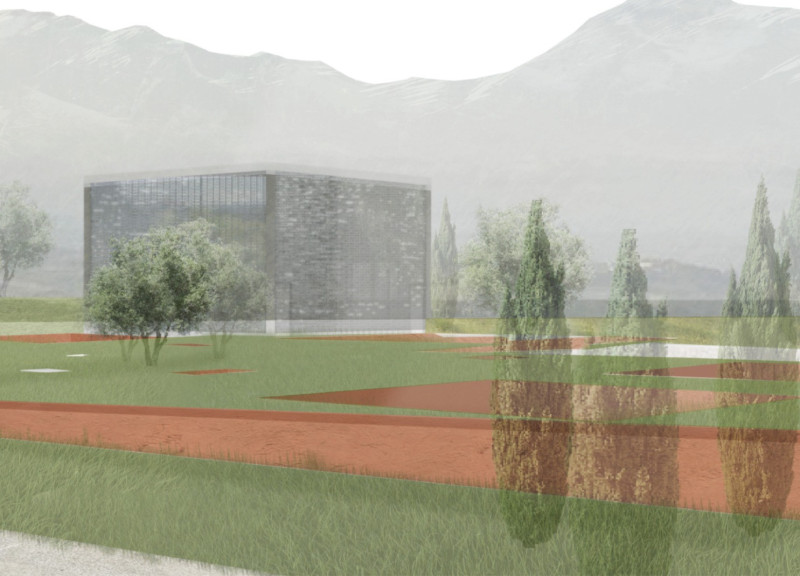5 key facts about this project
The design sits within the picturesque landscape of Umbria, focusing on the rich culture of winemaking. It features distinct spaces that serve various functions, particularly highlighting a wine tasting area that enhances the experience of savoring fine wine. The overall concept encourages visitors to explore the connections between the built environment and the region's heritage.
Wine Tasting Area
The wine tasting area, prominently the only space above ground, is designed like a jewel case that highlights the wine products. This unique form draws attention and elevates the experience of tasting. It creates a special identity that emphasizes the celebratory essence of wine. The design promotes community interaction among visitors, reflecting the collaborative spirit of winemaking.
Entrance and Reception
A gently sloping pathway leads visitors to an underground reception area, marking the transition from the outside to a more sheltered space. This descent signifies a journey into the depths of wine production. The reception serves as a welcoming point, orienting guests to the various amenities offered within this experience-rich environment.
Guest Houses
Five guest houses line a central alley, each designed to provide cozy sleeping areas and open living spaces that connect to outdoor terraces. These arrangements foster a relationship with nature, as careful placement of small openings allows natural light and views to flow in. This design decision enhances visitor interactions while ensuring privacy and comfort.
Landscape Integration
A large terrace with a natural swimming pool acts as both a serene retreat and an area for interaction with the landscape. This outdoor space connects the built environment to the natural world, providing guests a relaxing area to appreciate the surrounding beauty. The design integrates with the landscape through a flat vegetated roof, contributing to local biodiversity and minimizing the impact on the terrain.
An important feature of the wine tasting area is the use of glass blocks, creating a transparent connection to the outside. This choice enhances the interaction between the interior and the landscape, inviting natural light in while maintaining a distinctive architectural presence. The effect is a space that feels open and connected, illustrating the relationship between architecture and its setting.






















































